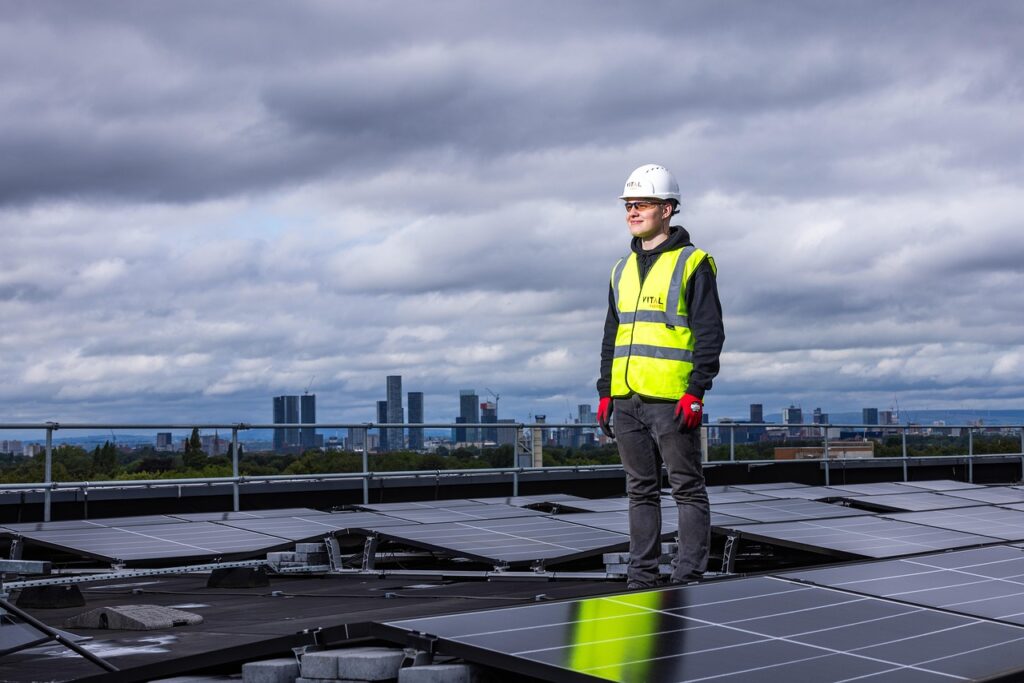Solar energy is no longer just a “green trend” — it’s a smart financial decision for UK homeowners. With rising energy prices and increased government support for renewable energy, solar panels are becoming a must-have investment. But the question many people ask is: “Is my home actually suitable for solar panels?”
In this comprehensive guide, we’ll break down everything you need to know — from roof type and sunlight exposure to financial incentives and maintenance — so you can decide if solar panels are the right choice for your home.
1. Why Check Your Home’s Solar Suitability?
Installing solar panels is a long-term investment. While they can save you hundreds of pounds on your electricity bills and reduce your carbon footprint, not every property is ideal.
By checking your home’s suitability first, you avoid wasting time, money, and energy on a system that won’t deliver the expected returns.
2. Key Factors That Determine Solar Panel Suitability
2.1 Roof Orientation & Tilt
- Best Direction: In the UK, a south-facing roof captures the most sunlight throughout the year.
- Good Alternatives: East- and west-facing roofs can still produce great results, but expect slightly lower efficiency.
- Tilt Angle: Ideally between 30° and 40° for maximum sun exposure.
2.2 Roof Size & Condition
- You’ll need enough unshaded space to fit at least 8–12 panels for a standard household system.
- Your roof should be structurally sound and able to support the weight of solar panels (around 20 kg per panel).
- If your roof is over 20 years old, consider repairs or replacement before installation.
2.3 Shade Levels
- Trees, tall buildings, and chimneys can block sunlight and reduce efficiency.
- Even partial shading can significantly impact output, especially with older panel technology.
- Modern systems can use microinverters to minimize shading effects.
2.4 Local Climate & Weather
- Despite the UK’s cloudy weather, solar panels still work efficiently.
- Solar panels produce electricity from daylight, not direct sunlight — meaning they still work on cloudy days.
- Southern parts of the UK generally get more solar hours per year.
2.5 Energy Usage
- Solar works best if your household uses a significant amount of electricity during daylight hours.
- Consider pairing your system with a solar battery to store excess energy for night-time use.
3. Financial Benefits of Installing Solar Panels in the UK
3.1 Reduced Energy Bills
Depending on your system size, you could save £300–£800 per year.
3.2 Earn Money Through SEG (Smart Export Guarantee)
Sell unused electricity back to the grid and receive payments from your energy supplier.
3.3 Increase Property Value
Homes with solar panels often sell faster and at higher prices.
3.4 Protection from Energy Price Rises
Generate your own electricity and become less dependent on the National Grid.
4. How to Check If Your Home Is Suitable
Step 1: Use Google Maps or a solar calculator to check your roof’s orientation and sunlight exposure.
Step 2: Assess your roof’s structural condition.
Step 3: Request a free on-site survey from a certified solar installer.
Step 4: Compare multiple quotes before deciding.
5. Common Myths About Solar Panel Suitability
❌ Myth: Solar panels don’t work in the UK because it’s cloudy.
✅ Fact: Germany, which gets less sunlight than parts of the UK, is one of the world leaders in solar energy.
❌ Myth: You need a huge roof.
✅ Fact: Even a small roof can generate enough power for lighting, appliances, and heating support.
6. Government Incentives & Grants in 2025
- ECO4 Scheme — May cover solar installation for low-income households.
- VAT Exemption — Solar panel installations are VAT-free in the UK until at least 2027.
- Local Council Grants — Check if your local authority offers renewable energy incentives.
7. Final Verdict: Is Your Home Suitable?
If your roof is:
- South, east, or west-facing
- In good condition
- Free from major shading
- Large enough for at least 8 panels
…then yes, your home is likely suitable for solar panels. The next step is to get a professional assessment.
8. Quick Checklist Before Installing
✅ Roof faces south, east, or west
✅ Tilt between 30°–40°
✅ No heavy shading from trees/buildings
✅ Roof in good structural condition
✅ Electricity usage high during daytime
✅ Access to a certified installer
